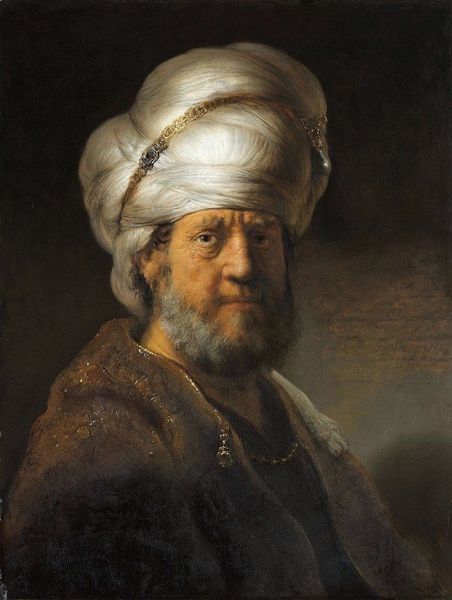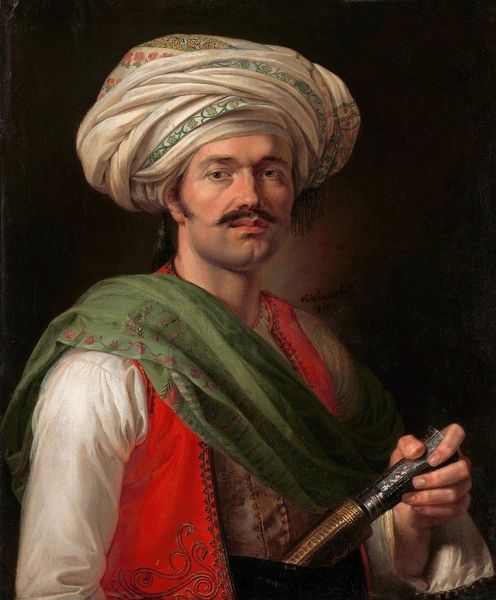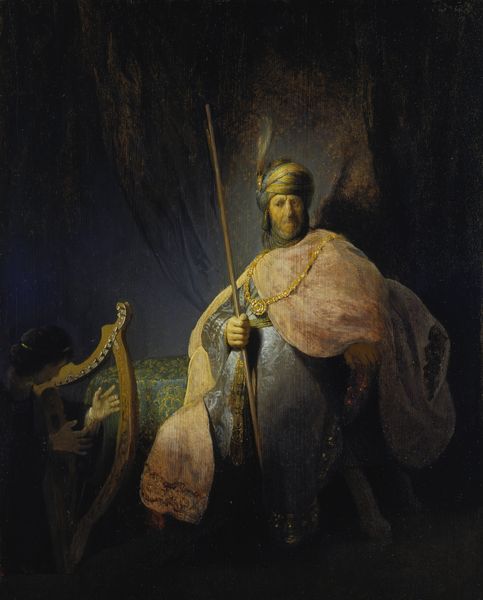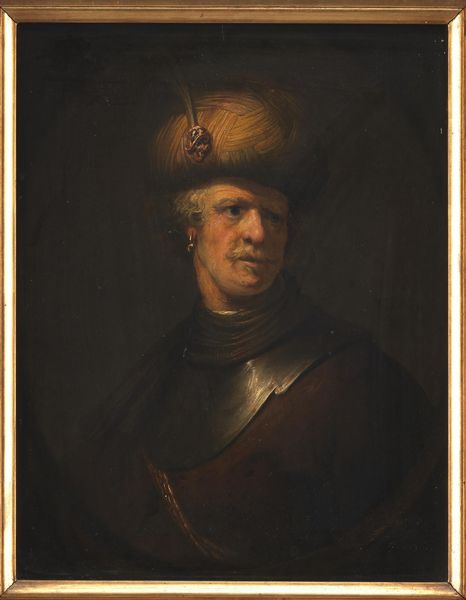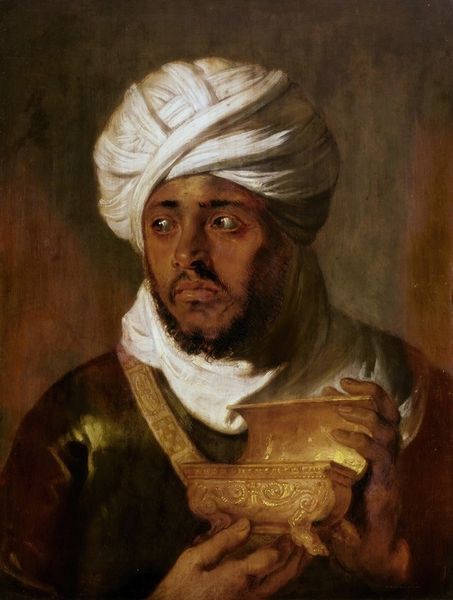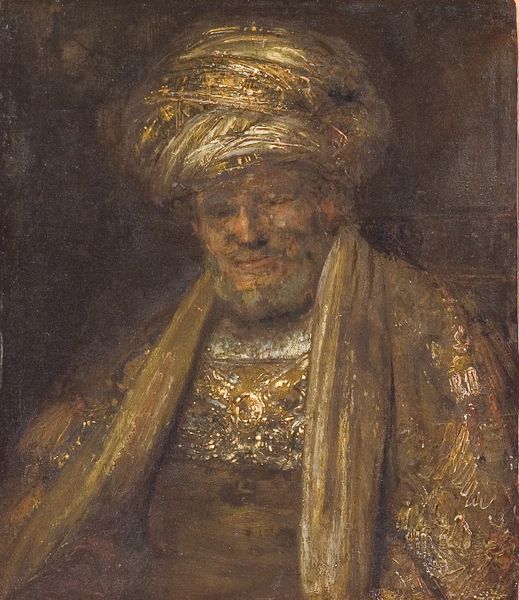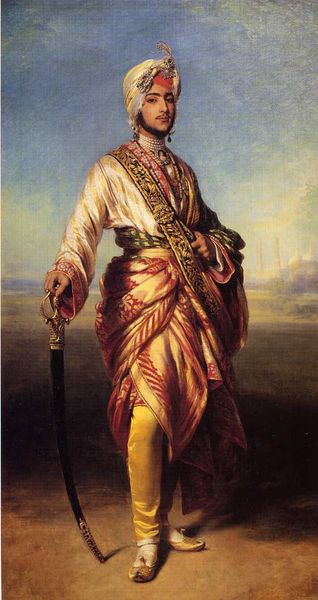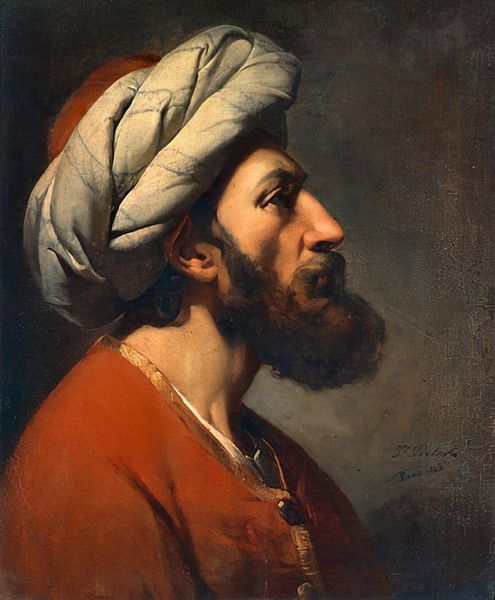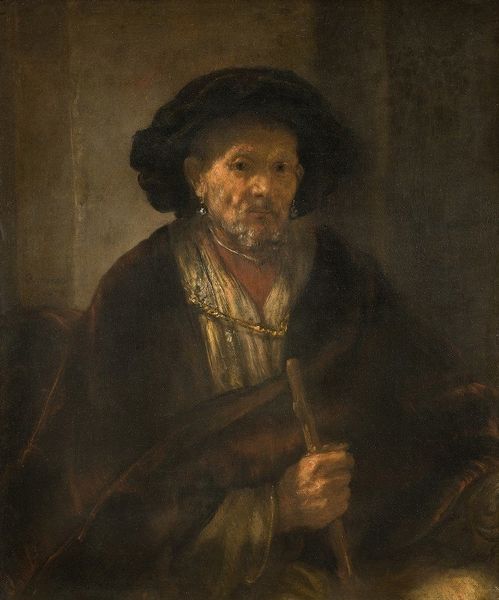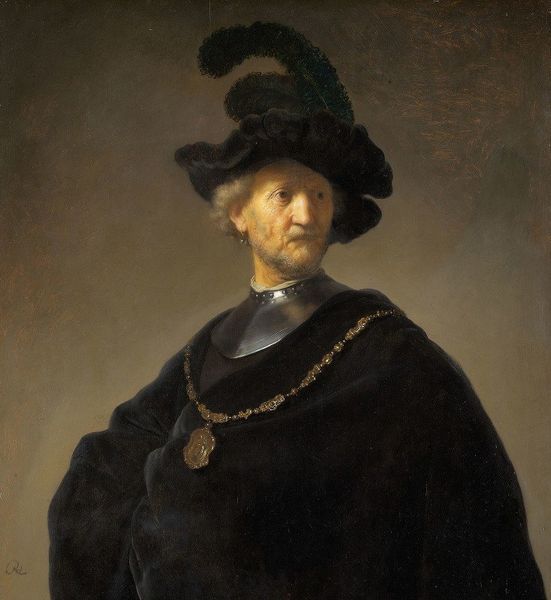
Man in Oriental Costume ("The Noble Slav" or "Man in a Turban") 1632
0:00
0:00
painting, oil-paint
#
portrait
#
self-portrait
#
baroque
#
dutch-golden-age
#
painting
#
oil-paint
#
orientalism
#
history-painting
Dimensions: 152.7 x 111.1 cm
Copyright: Public domain
Curator: Let’s turn our attention to Rembrandt van Rijn's "Man in Oriental Costume," sometimes known as "The Noble Slav" or "Man in a Turban," dating back to 1632. It's oil on canvas, currently residing here at the Met. What strikes you most about it? Editor: He looks...wistful. Like he’s seen a few empires rise and fall, all while trying to find a good rug. It's that face, isn't it? The deep set eyes... Curator: Indeed. Notice how Rembrandt utilizes materials to evoke the sitter's status. It's oil paint, but look closely – consider the layering, the impasto in that turban. And what kind of labor went into sourcing those pigments? Ultramarine alone... Editor: Right. It does feel a bit like dress-up though, doesn’t it? I can almost hear him thinking, "Does this turban make me look important?" I've always thought that there was playfulness. Like he's caught between worlds, maybe poking fun at the exotic. Curator: Precisely. This sort of "orientalism," as it's sometimes categorized, had real market demand. Think about the networks needed to get these 'exotic' garments, likely theatrical costumes, into Rembrandt’s studio, alluding to trade routes. Also consider, were these actually the clothing worn by any particular figure in Rembrandt’s community, and the implied social structure of laborers responsible for assembling the raw material? Editor: But look at that light though, the way it hits that robe… Rembrandt really knew how to make fabrics sing. Its also that subtle play on status—dignified yes, but accessible, relatable. Perhaps an allegory for humanity more so than a period history painting… It feels deeply, profoundly human. Curator: Exactly. And think about the economic structure that sustains Rembrandt. Patrons commissioning portraits, each brushstroke part of a commercial enterprise—a constant cycle of creating commodities from very earthly materials and production practices. Editor: Right, but it doesn’t *feel* commodified when I’m looking at him! That's Rembrandt's magic, isn’t it? Transforming materials into something that whispers directly to our soul. Curator: Yes, from pigment to perceived 'genius,' quite a material transformation. Thank you for speaking to that alchemic property with me. Editor: Thanks, that made me look at things with new eyes, it all boils down to finding some spark that moves your heart.
Comments
No comments
Be the first to comment and join the conversation on the ultimate creative platform.
